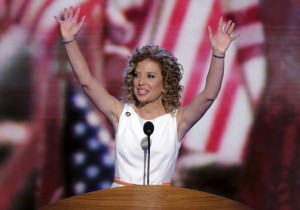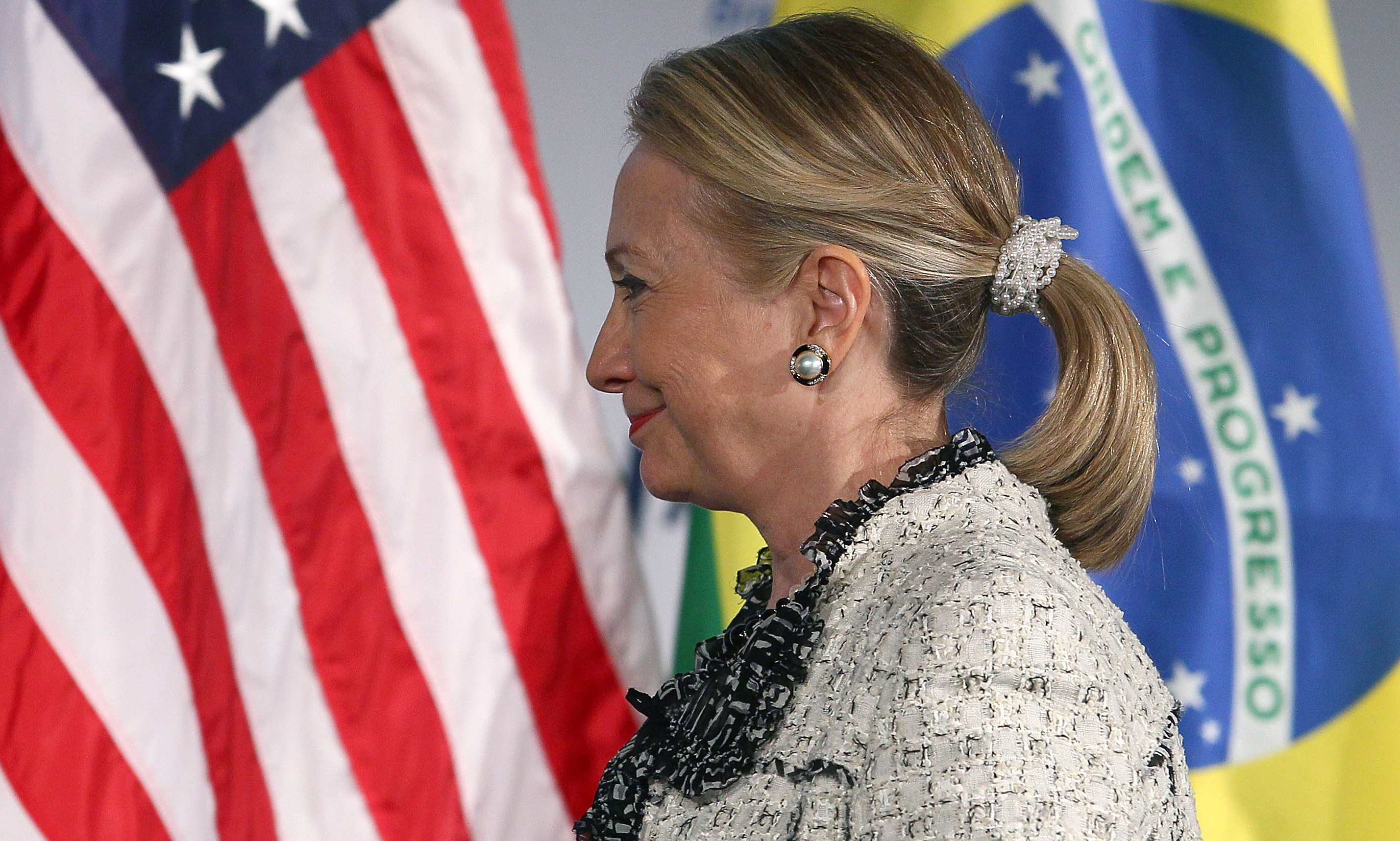This past week, Debbie Wasserman Schultz, chair of the Democratic National Committee, was lambasted in a series of articles for repeatedly requesting that the DNC pay for her wardrobe. Although such a request may seem more befitting to a pop star than to a public figure, it is a stark reminder that for women politicians, looking good is part of the job. It makes sense in a national political context where conversation over Michelle Obama’s speech at the Democratic National Convention is overshadowed by her over toned arms and where talk of Hillary Clinton’s record-breaking travel log is overshadowed by her hairdos.
At the same time, a recent study found that the American public cares relatively little about their politicians’ appearances. If they do care, they tend to care about men and women the same amount. It seems that although the American public is not overtly judgmental of their politicians’ physical appearances, the media continues to debate it extensively. And although the public is not naturally skewed by the appearance of its government representatives, the media’s extensive coverage of it does affect their opinions on their politicians. Ultimately, when the media is constantly disparaging a certain politician’s frumpy outfit, it can definitely hurt them.
As long as women have occupied the upper echelons of government, their style has been a central point in their portrayal by the media. Margaret Thatcher, arguably the most visible female politician of her era, made fashion integral to her identity. Thatcher, much like Wasserman Schultz, realized the impact her clothing made on the media. On a Yorkshire television program in 1985, Thatcher was repeatedly asked whether it was a “bore” to have to be so conscious of her clothes. She brushed off the question, saying it had “become part of the job.” Thatcher’s infamous black handbag became a symbol for her tough negotiation tactics because she routinely slammed it down for emphasis. It became known as “handbagging.” Thatcher placed such importance on dressing properly for the job that she divulged that being placed on the International Best Dressed List of 1988 was “one of the greatest moments” of her life.
Thatcher’s “power dressing” is almost as remembered by the media as her conservative politics; when she passed, articles by both liberal and conservative outlets including The Guardian, The Huffington Post and The New York Times published pieces lauding her “intelligent” fashion.
As in Thatcher’s case, the media most confidently praises women with toned-down but stylish wardrobes, using them as a reflection of their professionalism. During Michelle Bachmann’s unsuccessful bid to win the Iowa Caucus, the Washington Post declared that although she may have lost the political race, she had still “won the fashion race.” According to a DC image consultant, she effectively “removed her wardrobe from the conversation,” demonstrating her professionalism and femininity in a way that discouraged the media from obsessing over her presentation either in praise or criticism.
It seems as if the media sets what sort of style for female politicians is appropriate enough to evade commentary. A CNN State of the Union Blog post summed up what media firms had come to expect to see in politicians’ styles: some of the suggestions were to never wear ponytails, to opt for red clothes instead of black ones and to seize every opportunity to wear hot pink. The post promised that “a bit of sparkle goes a long way.” It seemed to imply that if the media is against ponytails, the public should be too.
Just as much as politicians can earn points with the media by upgrading their wardrobes, they can also do so by keeping them bare-bones in line with their political philosophies. In Germany, for example, Chancellor Angela Merkel’s lackluster wardrobe is termed as “endearing.” Bild, the most popular newspaper in Germany, defended Merkel for wearing the same tunic to formal events for nearly 20 years because “she stays true to herself.” Noting German media’s response, Merkel has continued dressing the way she always has. Her fashion, or lack thereof, is now part of her persona as well, and it benefits her. The media in a country known for its directness has no interest in belittling a popular Chancellor because of her fashion faux pas, so they made her dreary wardrobe a positive.
Unlike Thatcher, Merkel or Bachmann, Hillary Clinton has yet to woo the fashion-obsessed media critical of her style. She is known for hating the media and the media seems to reciprocate the sentiment. The media’s emphasis on her fashion as opposed to her accomplishments has to play into the strained relationship.
Given the fact that Hillary Clinton was the most traveled secretary of state in American history, being photographed at every locale, obviously put pressure on her to look perpetually ready for a photo-op. Clinton told a group of Yale students at commencement to “pay attention to your hair, because everyone else will.” Even after she left the State Department, her appearance dominated much of her media coverage. At Bill De Blasio’s inauguration, despite the interesting politics of the Clintons’ endorsement of the New York City mayor, the Huffington Post, known for its liberal leanings and feminist columns, published an article about her recently cut bangs.
Clinton’s difficulty in creating a political persona for herself has only become more aggravated over the years. It is probably linked to having held so many different offices throughout her political career: small-state first lady, the first lady, senator, presidential candidate, and secretary of state. All roles seem to demand a different image from the public, which has a hard time differentiating them, an understandable but problematic reality for both Clinton and all first ladies with serious political or social agendas.

Since Jackie Kennedy, and perhaps prior, the media has been obsessed with the glamour and glitz of our first ladies. Much of a first lady’s role is ceremonial, and especially in Jackie Kennedy’s time, a first lady was not expected to be involved in politics. However, modern first ladies usually take up certain causes: Hillary’s was healthcare; Michelle’s is child obesity. While they champion these causes, their substantive work is often overlooked because of the traditional role they are expected to play. Michelle Obama, for example, was criticized for wearing an expensive jacket to meet Queen Elizabeth II. Whereas the PR blitz that has accompanied Michelle Obama’s social causes has largely evaded criticism, it is telling that criticism of her spending on her traditional roles as the wife of the head of state is far more forthcoming. Instead of being recognized as a ceremonial position as well as an opportunity for social activism, the role of the first lady has perhaps been nudged out of both characterizations by the media — nowhere is this as evident as in the endless and contradictory conversations over the fashion sense of first ladies.
The media and the public expect a certain appearance out of their female lawyers, entrepreneurs, and politicians and it can often be incredibly difficult for politicians, specifically female ones, to navigate this odd intersection of politics and fashion. Given the difficulty and the exorbitant expense of dealing with it, Debbie Wasserman Schultz, who was once called, “Frizzilla” and Hillary Clinton, who was mocked for forcing a man to “involuntarily” cross his legs should be pitied, not attacked. They both seem to be trying and failing to, like Bachmann, “remove their wardrobe from the conversation.” Furthermore, rather than writing about how politicians can remove their fashion sense from political discussion, the media would be well-advised to establish a precedent and remove its own fashion-forward focus first.
